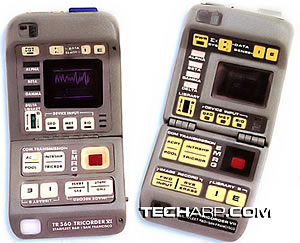Dude, Where Is Your WEP?

I've recently started using a Pocket PC again, and one of the more interesting applications I found and installed on the Pocket PC was a WiFi scanner called WiFiFoFum.
Veteran Pocket PC or SmartPhone users would probably have this application installed on their WiFi-enabled devices right now. But if you have not tried it yet yet, I highly suggest you do.
Seriously, it's one darn cool software. Just check out the screenshot to the right and you'll see what I mean.
However, I'm not writing this article to tell you about this cool application. Instead, I'll be showing you some interesting data I've gathered using this WiFi scanner. You'd probably also end up following my steps.
But first, let me set the premise of this little "experiment".
"Captain! The Tricorder Isn't Listening To Me!" - Worf

Perhaps, the tricorder aren't exactly made to scan for the 2.4 GHz band, only sub-space. ![]()
So, we will settle for a WiFi-enabled Pocket PC instead. Pairing it with the WiFiFoFum software, I was able to scan the vicinity for any available wireless access points.
Of course, you can do the same with a notebook and a WiFi scanner like NetStumbler. However, you won't look cool holding the notebook while walking around and scanning for those hot spots. You'd also be risking damage by moving the notebook about while it's still running.
Oh, what about those small and pocket-able WiFi scanners such as the Targus WiFi Scanner?
Well, although it does a good job of scanning for WiFi networks, it does not keep a log of your scans. So, unless you don't mind writing down the details on a notepad, it's really not very convenient. No one's stopping you from doing so though. ![]()
But seriously, using a Pocket PC with WiFiFoFum really rocks. It can keep a log of all the hotspots (access points) it detects (as long as the Pocket PC is running, of course!). It provides you with details like signal strength, SSID name, WEP status, and even the MAC address of the access point!







 Add to Reddit
Add to Reddit
